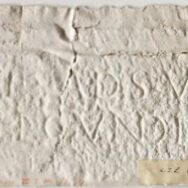Adsulatta : The Sacred River Mother of the Illyrians
Listen
At a glance
| Description | |
|---|---|
| Origin | Illyrian Mythology |
| Classification | Gods |
| Family Members | Savus (Husband) |
| Region | Slovenia, Croatia, Serbia |
| Associated With | River Savus |
Adsulatta
Introduction
Adsulatta, also known as Adsullata, was a local river and water deity worshipped in the Roman provinces of Noricum and Illyricum, particularly along the River Savus (modern Sava). Her cult was prominent in areas where Celtic and Illyrian traditions overlapped and later syncretized under Roman influence. Inscriptions dedicated to her have been found near Celeia (modern Celje, Slovenia) and along riverbanks that served as important trade routes in antiquity. She was venerated as a guardian of waterways and possibly as a goddess of healing springs or local prosperity, reflecting the region’s dependence on its rivers for transport and sustenance.
Physical Traits
There are no surviving ancient descriptions or images of Adsulatta. However, the few dedications found on Roman altars identify her through her association with water and river cults, suggesting she was perceived as a nurturing and protective force. Archaeological records describe her name inscribed on stone votives alongside that of Savus, the personified river deity. The pairing implies a divine embodiment of the river’s life-giving and navigational powers rather than a detailed anthropomorphic portrayal.
Family
Adsulatta is often linked with Savus, the river god of the Sava, through joint dedications discovered in Noricum. The two are understood as divine counterparts — Savus representing the masculine spirit of the river, and Adsulatta the feminine aspect of its healing and protective qualities. Beyond this partnership, there is no evidence in epigraphic or literary records indicating any familial relations, offspring, or wider pantheon associated with her.
Other Names
The goddess is most commonly referenced under the name Adsullata, which appears in Latin inscriptions. Variants such as Adsulatta and Adsalluta may reflect minor regional or orthographic differences but refer to the same deity. The root of her name possibly derives from the Proto-Celtic ad-sala meaning “toward the hall” or “to the waters,” though this remains a linguistic hypothesis rather than a confirmed etymology. All known occurrences of the name appear within the Romanized Illyrian and Celtic territories of Noricum, suggesting she was a localized deity with no known Greek or Roman equivalent.
Powers and Abilities
As a river and water goddess, Adsulatta’s domain encompassed protection of travelers, fertility of the land, and safety of waterways. Dedications made to her by Roman citizens and soldiers indicate she was invoked for safe passage along the Sava River, a vital trade route connecting the Adriatic to the Danube basin. Her link with thermal springs and freshwater sources in some areas suggests she may also have been honored as a goddess of healing and purification.
Unlike major Roman deities, Adsulatta’s worship remained regional and practical. Altars inscribed “Deae Adsullatae” (“To the goddess Adsullata”) imply personal devotion rather than state cult, often erected by travelers or merchants in gratitude for protection. Her divine influence was thus rooted in the daily realities of river life — travel, trade, health, and renewal.
Modern Day Influence
While her cult faded with the Christianization of the Balkans, Adsulatta’s legacy survives in archaeological findings and academic studies of Illyrian religion. Inscriptions dedicated to her and Savus have been catalogued in the Corpus Inscriptionum Latinarum and local museum collections across Slovenia and Croatia. Modern scholars reference her as evidence of syncretism between Celtic, Illyrian, and Roman belief systems, where local deities were adopted into the Roman pantheon while retaining distinct regional identity.
Today, Adsulatta features in academic literature, museum exhibits, and mythological databases such as Mythlok and the Dictionary of Ancient Deities. Though not a major figure in popular culture, her worship underscores the enduring significance of rivers in ancient European spirituality — symbols of both boundary and connection.
Related Images
Sources
Coulter, C. R., & Turner, P. (2001). Dictionary of ancient deities. New York, NY: Oxford University Press.
Earth and Starry Heaven. (2016, December 14). Adsalluta and Savus. Retrieved November 7, 2025, from https://earthandstarryheaven.com/2016/12/14/adsalluta/
Wilkes, J. J. (1992). The Illyrians. Oxford, UK: Blackwell Publishing.
Wikipedia. (n.d.). Adsullata. In Wikipedia: The Free Encyclopedia. Retrieved November 7, 2025, from https://en.wikipedia.org/wiki/Adsullata
Corpus Inscriptionum Latinarum (CIL III, 3820–3823). (n.d.). Inscriptions dedicated to Adsullata and Savus. Berlin: Berlin-Brandenburg Academy of Sciences and Humanities.
Scherrer, P. (Ed.). (2002). The Roman provinces of Noricum and Pannonia: Cultural and religious syncretism. Vienna, Austria: Austrian Academy of Sciences Press.
University of Ljubljana Archaeological Department. (2019). Epigraphic evidence of river cults in Roman Slovenia. Journal of Illyrian Studies, 15(2), 85–102.
Frequently Asked Questions
Who is Adsulatta in Balkan mythology?
Adsulatta is a significant figure in Balkan mythology, often recognized as a goddess associated with fertility, nature, and the harvest. She represents the life-giving aspects of the earth and is revered for her role in agricultural abundance.
What are the key attributes of Adsulatta?
Adsulatta embodies qualities such as nurturing, growth, and prosperity. She is often depicted as a maternal figure, symbolizing the connection between humans and the natural world, and her blessings are sought for fruitful crops and healthy livestock.
How is Adsulatta worshipped in the Balkans?
Worship of Adsulatta typically involves rituals, offerings, and festivals celebrating the earth’s fertility and the harvest. Communities may perform traditional dances, songs, and ceremonies to honor her and seek her favor for bountiful yields.
What role does Adsulatta play in local folklore?
In local folklore, Adsulatta is often featured in tales that explain natural phenomena, agricultural practices, and seasonal changes. She is frequently invoked in stories about the cycles of life and death, reflecting her integral role in the rhythms of nature.
How does Adsulatta compare to other deities in Balkan mythology?
Adsulatta is similar to other fertility goddesses found in various mythologies, such as Demeter in Greek mythology or Ceres in Roman mythology. While each deity has unique attributes, they all share a common theme of nurturing the earth and ensuring agricultural prosperity, highlighting the importance of fertility in human existence.










